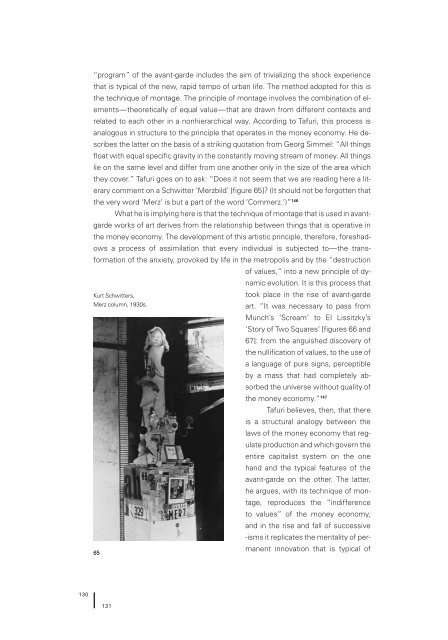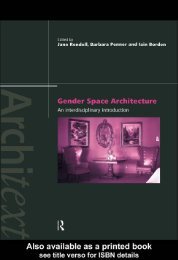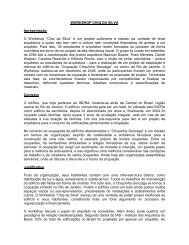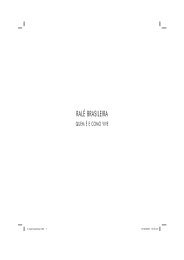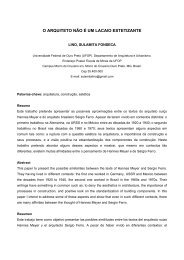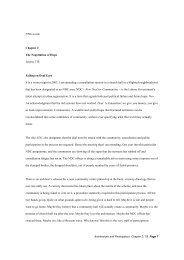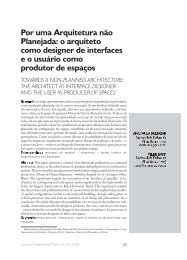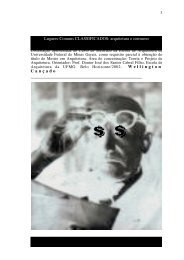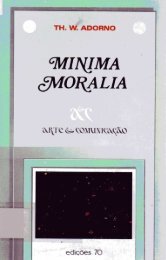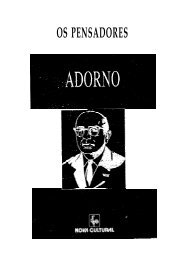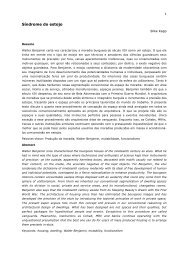Architecture and Modernity : A Critique
Architecture and Modernity : A Critique
Architecture and Modernity : A Critique
Create successful ePaper yourself
Turn your PDF publications into a flip-book with our unique Google optimized e-Paper software.
130<br />
“program” of the avant-garde includes the aim of trivializing the shock experience<br />
that is typical of the new, rapid tempo of urban life. The method adopted for this is<br />
the technique of montage. The principle of montage involves the combination of elements—theoretically<br />
of equal value—that are drawn from different contexts <strong>and</strong><br />
related to each other in a nonhierarchical way. According to Tafuri, this process is<br />
analogous in structure to the principle that operates in the money economy. He describes<br />
the latter on the basis of a striking quotation from Georg Simmel: “All things<br />
float with equal specific gravity in the constantly moving stream of money. All things<br />
lie on the same level <strong>and</strong> differ from one another only in the size of the area which<br />
they cover.” Tafuri goes on to ask: “Does it not seem that we are reading here a literary<br />
comment on a Schwitter ‘Merzbild’ [figure 65]? (It should not be forgotten that<br />
the very word ‘Merz’ is but a part of the word ‘Commerz.’)” 146<br />
What he is implying here is that the technique of montage that is used in avantgarde<br />
works of art derives from the relationship between things that is operative in<br />
the money economy. The development of this artistic principle, therefore, foreshadows<br />
a process of assimilation that every individual is subjected to—the transformation<br />
of the anxiety, provoked by life in the metropolis <strong>and</strong> by the “destruction<br />
of values,” into a new principle of dynamic<br />
evolution. It is this process that<br />
took place in the rise of avant-garde<br />
art. “It was necessary to pass from<br />
Munch’s ‘Scream’ to El Lissitzky’s<br />
‘Story of Two Squares’ [figures 66 <strong>and</strong><br />
67]: from the anguished discovery of<br />
the nullification of values, to the use of<br />
a language of pure signs, perceptible<br />
by a mass that had completely absorbed<br />
the universe without quality of<br />
the money economy.” 147<br />
Kurt Schwitters,<br />
Merz column, 1930s.<br />
Tafuri believes, then, that there<br />
is a structural analogy between the<br />
laws of the money economy that regulate<br />
production <strong>and</strong> which govern the<br />
entire capitalist system on the one<br />
h<strong>and</strong> <strong>and</strong> the typical features of the<br />
avant-garde on the other. The latter,<br />
he argues, with its technique of montage,<br />
reproduces the “indifference<br />
to values” of the money economy,<br />
<strong>and</strong> in the rise <strong>and</strong> fall of successive<br />
-isms it replicates the mentality of permanent<br />
innovation that is typical of<br />
65<br />
131


